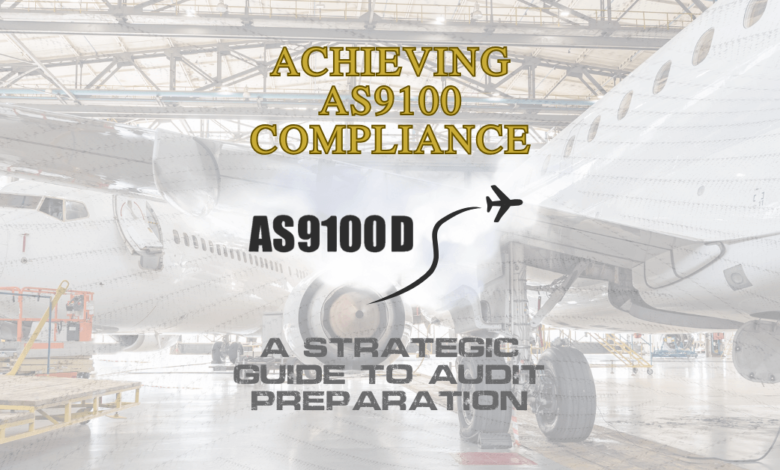How to Prepare for an AS9100 Compliance Audit

In the aerospace industry, attaining AS9100 compliance is more than a certification—it’s a testament to an organization’s commitment to quality, safety, and continuous improvement. Preparing for an AS9100 audit requires a structured approach to ensure that all aspects of the Quality Management System (QMS) align with the stringent requirements of the standard.
Understanding AS9100 Compliance
AS9100 is a globally recognized standard that incorporates ISO 9001 requirements with additional aerospace-specific criteria. Achieving compliance demonstrates that an organization consistently meets customer and regulatory requirements, positioning it as a reliable partner in the aerospace supply chain.
Step-by-Step Audit Preparation
1. Comprehensive Review of AS9100 Requirements
Start by understanding the AS9100D clauses and how they apply to your business model. This includes identifying how customer-specific requirements intersect with the standard and ensuring your processes cover every requirement. Your QMS should be aligned with the structure of AS9100, especially in the areas of:
- Context of the organization
- Leadership and planning
- Support and operational control
- Performance evaluation and improvement
If you’re new to AS9100, consider cross-referencing each clause with your current documentation and business practices.
2. Conduct a Gap Analysis
A gap analysis is a foundational step that identifies where your current quality system falls short of AS9100D requirements. This analysis should be conducted by someone with a strong understanding of the standard and your operations. Focus on:
- Whether required procedures and controls are documented
- Whether there is objective evidence (records) to support each requirement
- Whether responsibilities are clearly assigned and followed
Use the results to create a prioritized action plan. Document the findings and revisit them as you make corrections or improvements.
3. Update and Control Documentation
Documentation is one of the most visible parts of your QMS during an audit. Ensure your Quality Manual, policies, procedures, work instructions, and records are:
- Up to date and controlled through a formal revision system
- Consistent in format, version, and distribution
- Available to personnel where needed
- Reflective of actual practice (not just written for compliance)
Outdated or mismatched documentation is a red flag for auditors — make sure what you do matches what you say you do.
4. Employee Training and Awareness
Auditors will ask employees questions, especially those involved in key operations or quality control. Make sure your team understands:
- The scope and purpose of the QMS
- Quality objectives and how their role supports them
- How to handle nonconformities or stop work if quality is at risk
- Where to find work instructions or reference materials
Training records should be easily accessible, and refresher training should be documented for key roles.
5. Internal Audits and Management Reviews
Internal audits are a requirement of AS9100D and an essential tool for self-assessment. Plan and conduct audits that:
- Cover all QMS processes
- Are performed by trained, impartial auditors
- Include objective findings with corrective action tracking
In parallel, ensure you hold regular management reviews to assess the system’s effectiveness. Reviews should address:
- Audit results and nonconformities
- Customer feedback and complaints
- Key performance indicators (KPIs)
- Opportunities for improvement
- Risk management and strategic direction
Auditors often look closely at these meetings as indicators of leadership involvement.
6. Facility Readiness
Before the auditor arrives:
- Ensure your facility is clean, organized, and labeled properly (materials, tools, parts).
- Calibration and maintenance records for equipment should be current.
- Employee access to controlled documents should be functional.
- Records of process performance and improvement should be ready for review.
Conduct a mock audit walk-through with staff to identify weak spots and rehearse what to expect.
7. Engage in a Pre-Assessment Audit
A pre-assessment audit by a consultant or a separate internal team can simulate the actual audit experience. It helps you:
- Identify any last-minute gaps
- Train employees in audit interaction
- Validate that corrective actions have been effectively closed
- Reduce anxiety and build confidence
This can be especially helpful before a Stage 1 or surveillance audit to ensure audit readiness.
Final Thoughts
Achieving AS9100 compliance is a significant milestone that requires meticulous preparation and a culture of quality. By following these steps, your organization can approach the audit with confidence, demonstrating its dedication to excellence in the aerospace industry.

Source link





